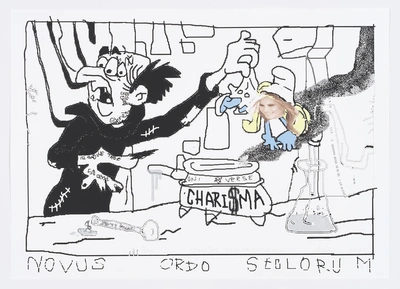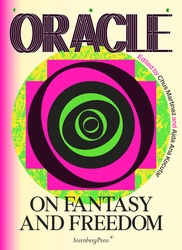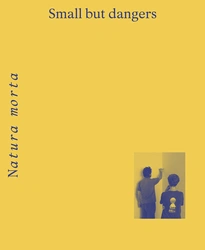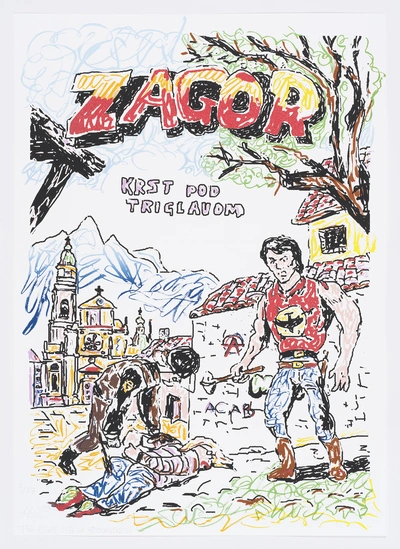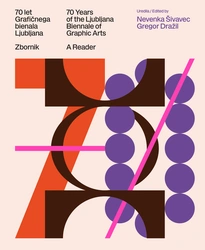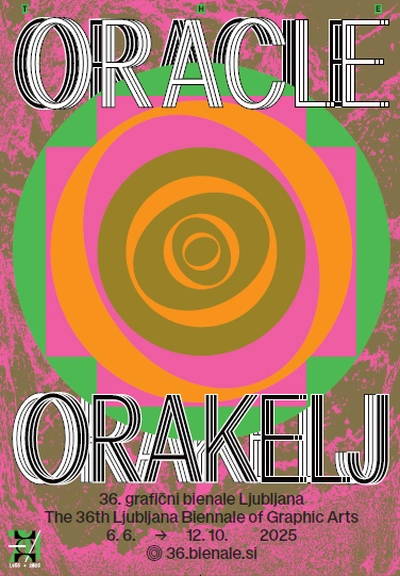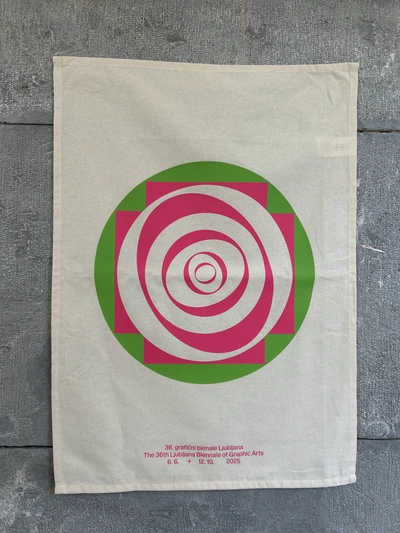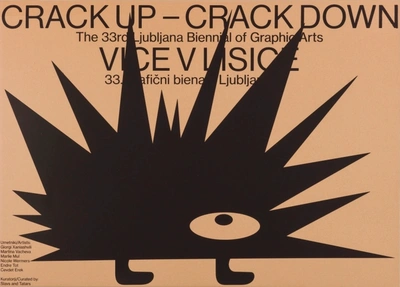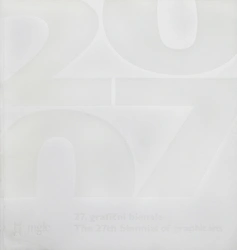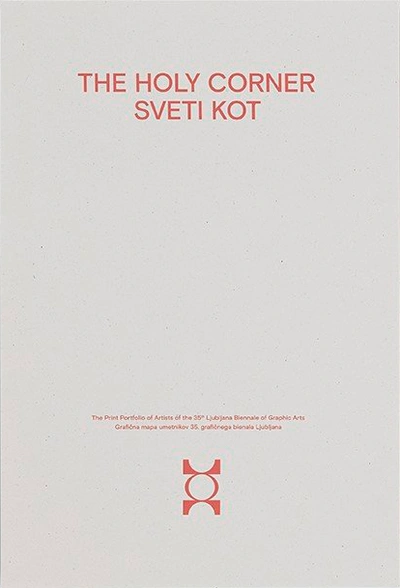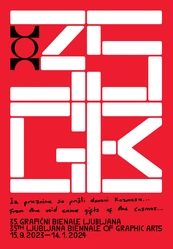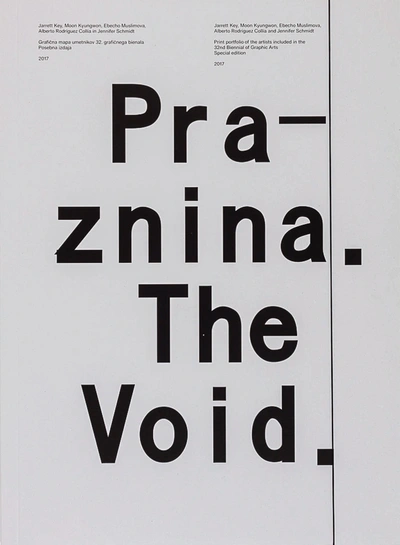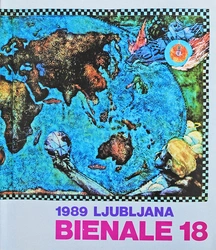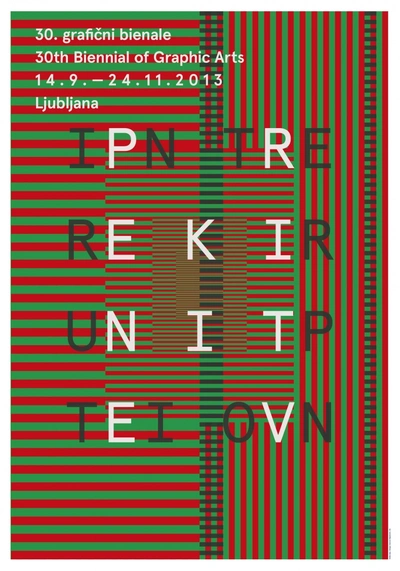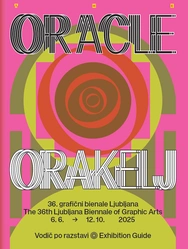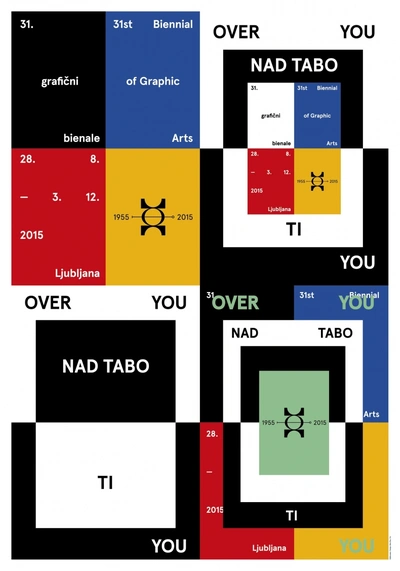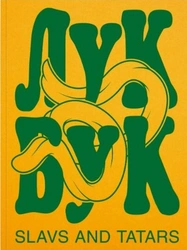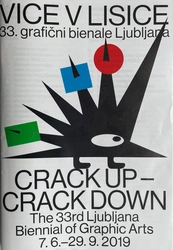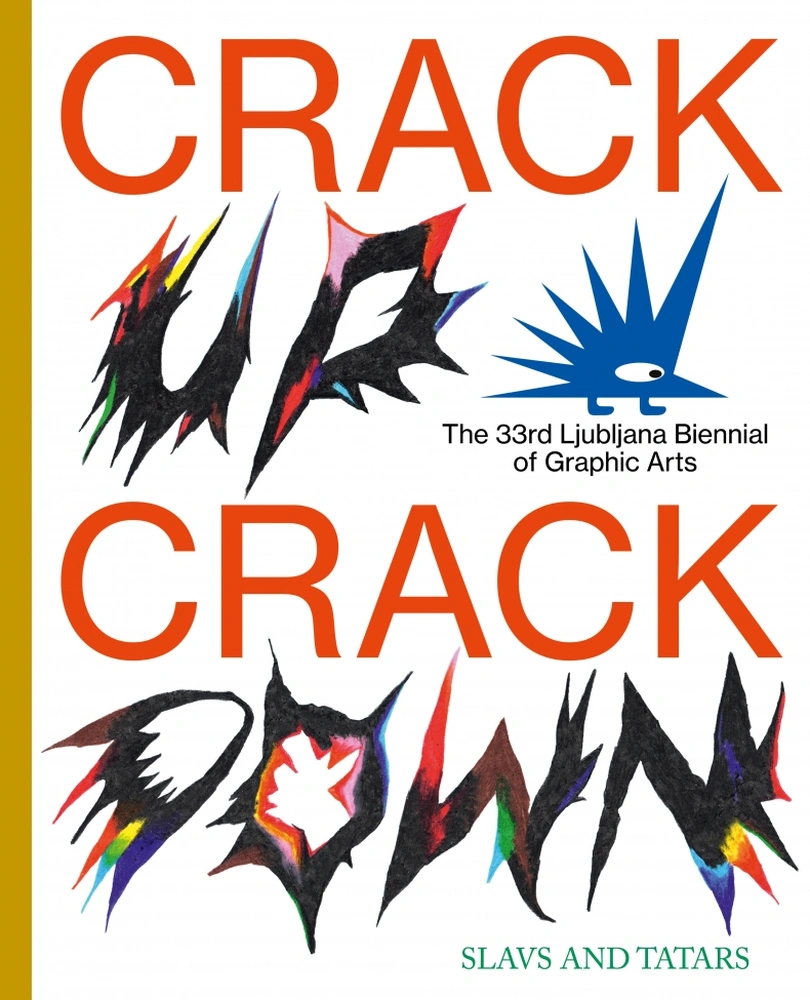
Crack Up – Crack Down
The publication Crack Up – Crack Down is an essayistic reflection of the 33rd Ljubljana Biennial of Graphic Arts of the same title. The present collection of original writing and visual essays edited by Slavs and Tatars (curators of the main exhibition Crack Up – Crack Down) and Melissa Constantine (a contemporary art researcher), expands the Biennial’s discursive focus on the graphic and satire. It has been co-published in English by MGLC and Mousse Publishing. In addition to the introductory texts on the Biennial and satire, it contains essays by Emily Apter on the micropolitics of the meme, David Crowley on punk as a platform for pretence in Poland and Hungary, Melissa Constantine on the affective infrastructure of satire, and Vid Simoniti on the cult Bosnian satire Top lista nadrealista and other Balkan predecessors. Top lista nadrealista and its communicative power is also covered in the insightful dictionary entry by Goran Vojnović. A special feature of the book is the contributions made by the individual artists of the 33rd Ljubljana Biennial of Graphic Arts Crack Up – Crack Down. These include Hamja Ahsan (the recipient of the Grand Prize of the 33rd Biennial of Graphic Arts), Metahaven, Alenka Pirman & KULA, Mohammad Salemy, Arthur Fournier & Raphael König and Augustin Maurs.
Before you is a visually diverse odyssey through the reflections on contemporary social and cultural phenomena, art, and the close alliance between social criticism and satire. Slavs and Tatars invite readers to delve into the book that does not treat the Biennial’s graphic heritage as a medium in itself, but rather as an agency and a strategy, with the following reflection: “We live in sour times, and such sour times require sweet-and-sour methods. With the rise of social media, comedians as politicians, and populism, there has recently been vigorous debate over who constitutes “the people”. For more than a couple millennia, satire has been a particularly contested genre to explore such questions, via varying degrees of serious invective or jocular teasing. Is each joke, as George Orwell maintained, a tiny revolution? Or does laughter and satire deflate the pressures and tension which could otherwise lead to political upheaval? As the accessibility of print brought about a proliferation of satirical periodicals in the early 20th century (Slovenia’s Pavliha, Germany’s Simplicissimus, the UK’s Punch, France’s l’Assiette au Beurre, or the Caucasus’ Molla Nasreddin to name a few), so too has the current digital age provided a particularly fertile avenue for satire, one which is fundamentally graphic, be it the meme or the protest poster. Though each enjoys a distinct history, both the graphic arts and satire claim to speak for and to the people.”
The book was designed by Stan de Natris (Slavs and Tatars) and the illustrations were contributed by the designer of the corporate image of the 33rd Biennial Crack Up – Crack Down, Nejc Prah. He received the Brumen Award for the latter in October 2019 together with his design team and the International Centre of Graphic Arts.
Related items
On display
